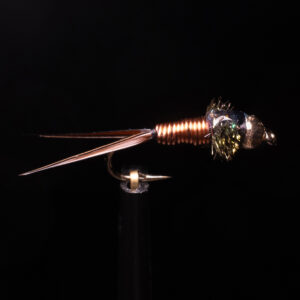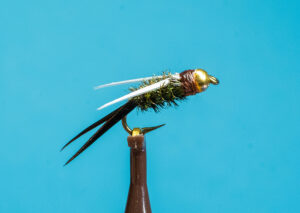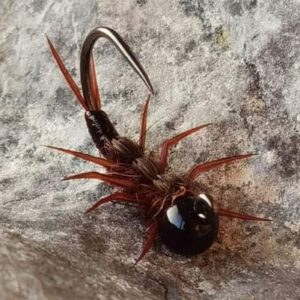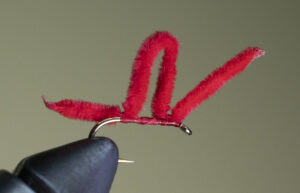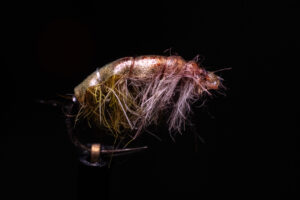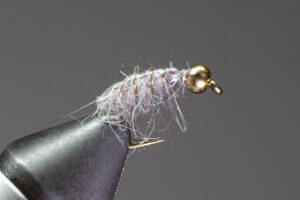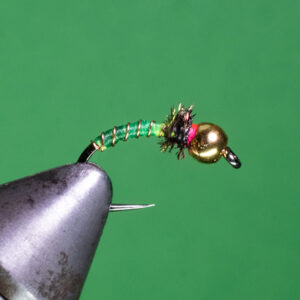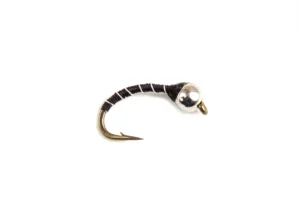Fly patterns to tie (or buy)
Like our list of top 5 dry flies, and like any list, these flies are completely subjective and very dependent on the time of year and where you’re fishing. That being said, we’ve found that having these 10 nymphs in your fly box (in various sizes, shapes, and colors) will cover most situations.
Since most flies spend the majority of their lives as underwater fishing subsurface is usually much more productive overall than fishing with dry flies. Unless of course you’re lucky enough to hit a hatch, which then by all means, switch to dries!
Here’s our list of 10 must-have nymph fly patterns (in no particular order):
- Pheasant Tail Nymph
- Gold-Ribbed Hare’s Ear
- Copper John
- Prince Nymph
- Stonefly Nymph
- San Juan Worm
- Scud
- Muskrat Nymph
- Caddis Nymph
- Midge
Pheasant Tail Nymph
This classic pattern mimics mayfly nymphs and is a go-to choice in any trout angler’s box. Its slender profile and natural coloration make it a versatile option throughout the season. Using just pheasant tail and peacock herl, it can be tied up pretty quickly.
Copper John
The Copper John was created by John Barr in the 1990s, and has been one of the most tied and most successful nymph fly patterns around.
Tied with a brass or tungsten bead, this is a fast-sinking fly that’s great for fast water. The version in this photo is tied with goose biots, copper wire, flashabou and peacock herl, but the pattern usually uses speckled brown hen hackle for legs as well. You can also change up the colors, like this red version.
Our personal favorite nymph, the Prince Nymph is one of the best producing flies. We’ve caught trout in every type of river with this pattern.
In this version, we’ve left out the brown soft hackle, but it’s easy to add. You can also tie this with synthetic peacock dubbing in various colors, and tie it with or without a bead.
Stonefly Nymph
Great for winter and early spring, these large fly patterns look super realistic, and the trout really go after them. Tie them as a jig or like this 20-incher. Try a variety to see what works on your stream, I find that the big trout really come out of the shadows for a nice stonefly, regardless of if they’ve seen them recently or not.
San Juan Worm
The San Juan Worm is a polarizing, sometimes controversial fly. Some people don’t even consider it a fly, but everyone uses it. Whether they admit to it or not is a different story.
There’s not a fly that’s faster or easier to tie, which makes this a great beginner fly pattern. Because of how fast you can tie these up, it’s a great pattern to fill your box with. Even if you don’t like it, or if you consider it ‘cheating,’ the San Juan Worm is a must have for those days when nothing is working.
I tie mine with a loop in the middle to give it a little more of a lifelike appearance in the water, though most patterns are tied tight to the hook without the loop.
There are about as many scud patterns as there are fly fishermen and women. These flies usually imitate small freshwater crustaceans, and depending the size and color you tie, they could imitate shrimp, sow bugs/pill bugs/potato bugs, and gammarus.
Some of our favorite dubbing for scuds is the Wapsi Sow Scud II combo dispenser. Thin skin or scud back is also key for a lot of patterns.
Muskrat Nymph
The muskrat nymph is similar to scud patterns, but this one usually is aiming to imitate a sow bug specifically. It works especially well on the waters in Central Pennsylvania, where I was taught to tie it by Mark Belden and Joe Humphreys.
Muskrat dubbing, gold wire, and a gold bead is all you need to tie the one in the photo, but you can also tie a simple version with only dubbing and that catches plenty of fish as well!
Most people think of caddis patterns as dry fly patterns, but the truth is that like most (all?) flies, caddis spend the majority of their life underwater. There are so many amazing caddis nymph patterns out there, and I love the one in the photo above, but these glass bead, emerger, jelly, and pupa patterns are all must-haves as well.
Zebra Midges are always a good fly to put on in slow moving or still water, but I’ve caught trout in fast riffles with them too… They imitate a chironomid midge larva, and though they’re pretty small, they’re also pretty easy to tie.
There are countless other great midge patterns as well, like the jujubee and Manhattan midges.
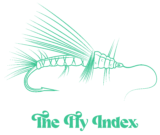
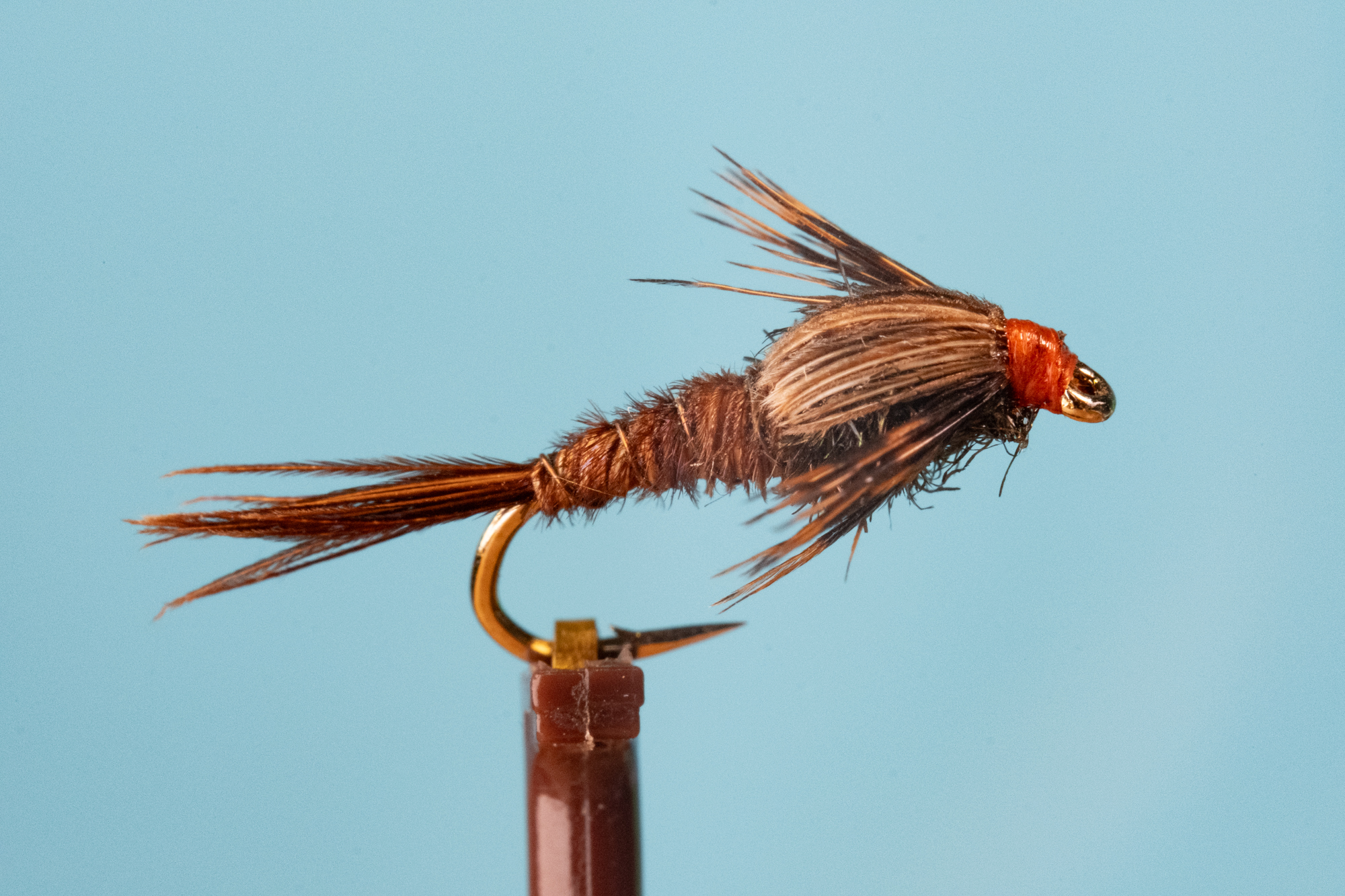
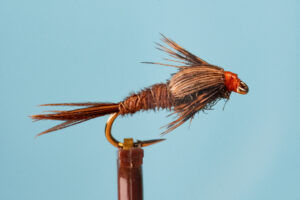
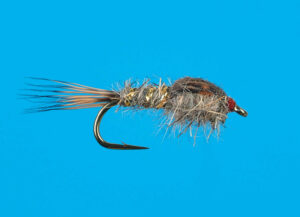
 .
.